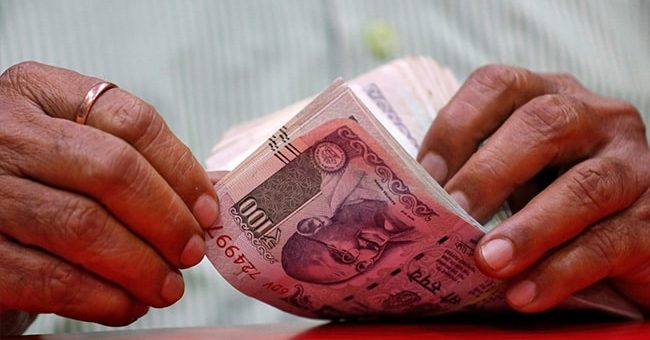
The rupee fell sharply to 81.90 a dollar, not far from its record low of 81.95
The rupee fell sharply to near its record low on Thursday as oil prices surged and renewed worries about the country’s external deficit, even as the dollar softened ahead of US jobs data that may provide some insight into the interest rate hike path.
PTI reported that the domestic currency fell 28 paise to close provisionally at 81.90 against the US dollar.
Bloomberg showed the rupee was last changing hands at 81.90 per dollar, not from its record low of 81.95, compared to its previous close of 81.52 on Tuesday.
The forex market was closed on Wednesday on account of Dussehra.
On Wednesday, a cartel of oil producers led by Saudi Arabia agreed to drastic production cuts, sending Brent crude futures to a three-week high of $93.99 per barrel.
That rise in crude prices will add to the country’s inflation trouble and the widening current account deficit (CAD) as India imports over 80 per cent of its oil needs.
“Oil is up after yesterday’s cut in production….up from about $83 per barrel last week to about $94 today. Oil is the main concern for our trade deficit and could increase our CAD from 2.8 per cent to about 3.5 per cent in the coming quarters,” said Anil Kumar Bhansali, Head of Treasury at Finrex Advisory Services.
“Today, the demand for $ has been mainly because of buying by oil companies,” he added.
That even as the dollar fell against a basket of major currencies on Thursday after rising 0.7 per cent the previous day, its biggest single-day jump in a week.
The greenback, which has been rising this year in what seems to be an irreversible trend, fell on Thursday, encouraging some risk-taking and helping the commodities complex, where oil was trading around its highest level in three weeks.
The Federal Reserve’s intention to raise interest rates quickly to combat inflation is still believed to be the main takeaway from Friday’s jobs report, backed up overnight by several central bank officials.
“The Fed officials have been giving out a clear message lately on the goal of getting inflation under control, without being concerned about the domestic economy or the turmoil in the global financial markets,” Charu Chanana, Strategist at Saxo Bank, told Reuters.
“While the two key indicators, Friday’s monthly payroll report and the monthly CPI data on October 13, could still distort the market pricing of the Fed’s message, that would make the Fed’s job that much harder.”













